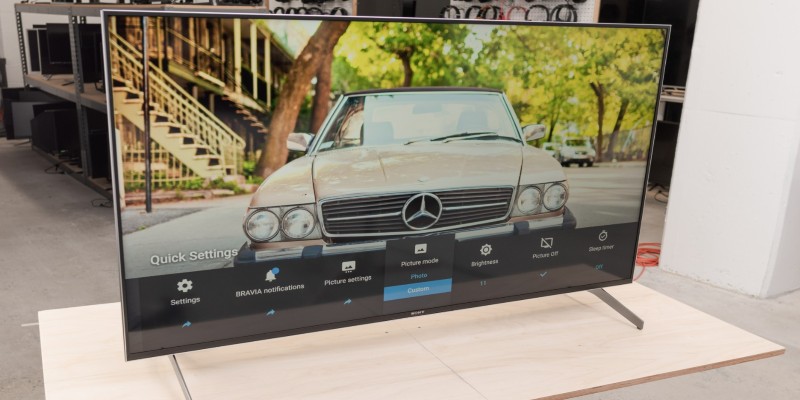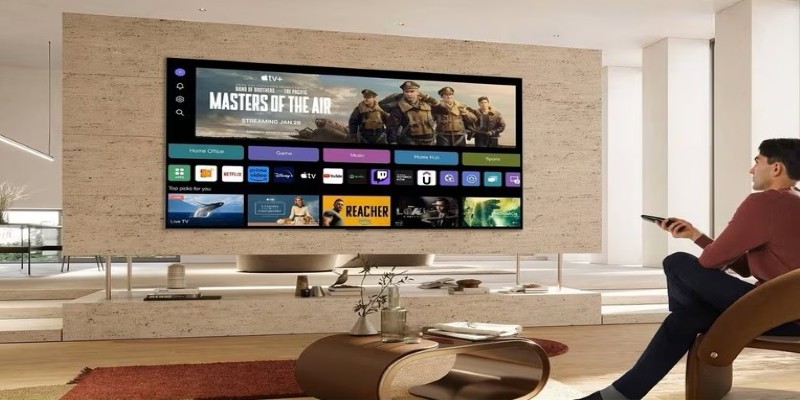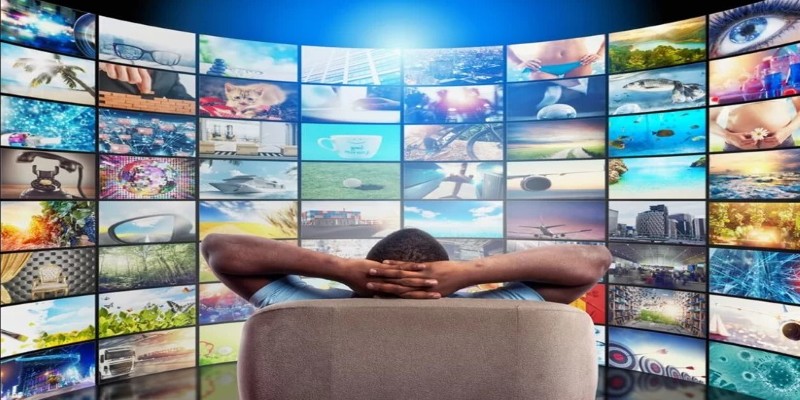How Smart TVs Are Evolving Fast
Smart TVs have rapidly become the centrepiece of modern entertainment. Once simple devices for viewing broadcast content, they are now sophisticated hubs for streaming, gaming, and even home automation. This article looks closer at smart TVs' fast-paced evolution, technological advancements, and how they reshape home entertainment in 2025.
The Integration Of Advanced AI And Machine Learning
Smart TVs are now more than just tools for consuming media; they are becoming intelligent systems capable of adapting to user behaviour. With advanced AI and machine learning integration, modern smart TVs can analyze viewing patterns, suggest content, and even fine-tune picture settings for optimal performance. For instance, AI-powered recommendations use algorithms that understand user preferences, making it easier to find what to watch without endless scrolling.
Another exciting feature is AI-assisted voice control. Smart TVs now support voice commands that are far more precise than previous iterations, allowing users to search, control smart home devices, and even ask questions directly through the TV. This functionality transforms the TV into an active participant in the smart home ecosystem.
Enhanced Display Technologies And Picture Quality
The evolution of display technology has been instrumental in making smart TVs more appealing. Innovations like OLED, QLED, and Mini-LED displays deliver stunning visuals with deeper blacks, brighter whites, and a broader colour gamut. In 2025, 8K resolution is becoming more accessible, providing an unmatched level of detail that complements high-quality streaming services.

Furthermore, smart TVs are adopting advanced processing units to support these displays. These processors ensure smooth playback of high-resolution content and improve motion handling, a critical feature for gamers and sports enthusiasts. Some TVs now offer adaptive HDR technology, which adjusts brightness and contrast in real-time based on the content being viewed and the surrounding lighting conditions.
Integration With Smart Home Ecosystems
Smart TVs' role extends beyond entertainment into the broader realm of home automation. Modern smart TVs can seamlessly integrate with platforms like Google Home, Amazon Alexa, and Apple HomeKit, functioning as control hubs for smart devices. With this integration, users can directly manage lights, thermostats, cameras, and other connected devices from their TVs.

Some TVs now have built-in support for Zigbee and Z-Wave protocols, enhancing compatibility with a wide range of smart home devices. This functionality eliminates the need for separate hubs, simplifying the smart home setup and reducing clutter.
The Rise Of Gaming-Centric Smart TVs
Gaming has become a key focus in the evolution of smart TVs. Manufacturers are equipping their models with features designed specifically for gaming enthusiasts. High refresh rates, low input lag, and support for variable refresh rate (VRR) technologies like NVIDIA G-SYNC and AMD FreeSync are becoming standard in high-end models.

Cloud gaming platforms are another significant development. Smart TVs now support services like Xbox Cloud Gaming and GeForce NOW, enabling users to play console-quality games without owning a dedicated gaming device. Including these features has broadened the appeal of smart TVs to a younger, tech-savvy audience.
Improved Accessibility And User Experience
Accessibility has been a significant focus recently, and smart TVs are becoming more inclusive. Features like voice-to-text for searching, closed captioning with customizable settings, and screen readers for visually impaired users have improved significantly. Additionally, user interfaces are being redesigned to be more intuitive, with minimalist menus and personalized home screens prioritizing frequently used apps and features.
Another area of improvement is multi-user profiles. Many smart TVs now allow different users to maintain their settings, recommendations, and watchlists. This feature is handy for households with diverse viewing habits.
Sustainability And Energy Efficiency
With growing environmental awareness, manufacturers prioritize sustainability in smart TV design. In 2025, many models feature eco-friendly materials and energy-efficient components. Innovations like automatic power-saving modes and solar-powered remote controls are gaining popularity.
Some brands also focus on longevity by offering software updates for older models, reducing electronic waste. This approach ensures that even older smart TVs can remain functional and up-to-date with the latest features.
Expanding Content And Streaming Options
Content availability has always been a driving force behind smart TV adoption. In 2025, the streaming landscape continues to expand with more platforms, exclusive shows, and live event broadcasts. Smart TVs now have faster processors and enhanced network connectivity to handle high-bandwidth streaming, ensuring a buffer-free experience even with 4K and 8K content.

Moreover, including native apps for niche streaming services has made accessing diverse content easier. Smart TVs cater to an increasingly varied audience, from global cinema to specialized documentaries.
Focus On Health And Wellness Features
Smart TVs are increasingly incorporating features designed to support health and wellness. In 2025, some models will include fitness apps with guided workouts, meditation programs, and calorie-tracking capabilities. These TVs can connect with wearables like smartwatches to display personal health metrics, including heart rate and activity levels, for a more complete view of your well-being. Additionally, integrated cameras and motion sensors enable interactive fitness sessions, allowing users to monitor their posture and form during exercises. Specific models also offer blue light reduction modes to minimize eye strain during extended viewing. These advancements reflect a growing trend where smart TVs are not just for entertainment but also tools for promoting a healthier lifestyle, making them more versatile and valuable in daily life.
The Future Of Smart TVs
The rapid evolution of smart TVs shows no signs of slowing down. In the short term, we can expect even greater integration with emerging technologies like virtual reality (VR) and augmented reality (AR). These advancements allow for more immersive gaming, interactive content, and innovative educational applications.

Another potential development is the inclusion of advanced biometric sensors. These could enable features like personalized content recommendations based on mood or even health monitoring through the TV. As technology progresses, smart TVs will continue to redefine what it means to be the centrepiece of the modern home.
Conclusion
Smart TVs have come far from their origins as simple entertainment devices. In 2025, they will be intelligent systems capable of enhancing everyday life through advanced AI, stunning visuals, gaming capabilities, and seamless integration with smart home ecosystems. With ongoing innovation and a focus on user-centric features, smart TVs are evolving fast and are set to play an even more significant role in our lives in the years to come.




